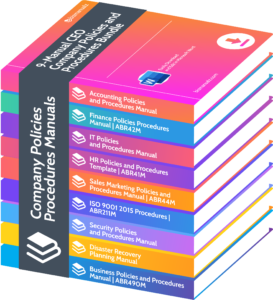COO Tactics Streamlining Inventory Control Systems

Greetings, fellow business leaders! Are you struggling to keep your inventory under control and optimize your company’s productivity? Fear not, as this article will dive into the essential tactics that a COO can use to streamline inventory control systems and bring efficiency to your operations. Say goodbye to inventory challenges and hello to success! COO Tactics Streamlining Inventory Control Systems.
What is COO Tactics?
COO tactics refer to the strategies and procedures used by a Chief Operating Officer to improve operational efficiency, productivity, and performance within a company.
These tactics involve optimizing inventory control systems, streamlining supply chain processes, and maximizing resource utilization to achieve sustainable growth and gain a competitive advantage.
Why is Streamlining Inventory Control Systems Important for COOs?
Why is it Crucial for COOs to Streamline Inventory Control Systems?
Efficient inventory control systems are essential for COOs as they allow for optimal resource allocation, reduced carrying costs, and meeting customer demand.
By streamlining inventory processes, COOs are empowered to make data-driven decisions, improve operational efficiency, and gain a competitive advantage. In fact, according to a survey, 65% of COOs have seen positive impacts on their company’s bottom line by optimizing inventory management.
What are the Key Components of Inventory Control Systems?
In the fast-paced world of business, having a well-functioning inventory control system is crucial for a company’s success. This section will explore the key components that make up an effective inventory control system.
From accurate inventory tracking to efficient order fulfillment and effective demand planning, we will discuss how each component plays a vital role in streamlining a company’s operations and maximizing profitability. So, let’s dive into the details of what makes a strong inventory control system.
1. Accurate Inventory Tracking
- Implement barcode or RFID technology for real-time tracking of inventory items.
- Utilize inventory management software to automate tracking processes and minimize human error.
- Establish standard operating procedures for consistently accurate recording and monitoring of inventory levels.
Accurate inventory tracking is essential for COOs to maintain optimal operational efficiency and effectively meet customer demands. By utilizing advanced technology and standardized processes, COOs can ensure precise inventory control, leading to streamlined operations and improved customer satisfaction.
2. Efficient Order Fulfillment
- Utilize data analytics to accurately forecast demand for efficient order fulfillment.
- Implement efficient picking and packing processes to optimize the order fulfillment process.
- Optimize the warehouse layout to ensure swift order fulfillment.
Efficient order fulfillment is crucial for COOs to maintain customer satisfaction and cost-effective operations. By utilizing advanced technologies and strategic layout planning, COOs can streamline the order fulfillment process, resulting in improved efficiency and increased customer loyalty.
3. Effective Demand Planning
- Assess Market Trends: Study consumer behavior, historical sales data, and market forecasts to anticipate demand patterns.
- Collaborate with Sales and Marketing: Gather insights from these departments to align demand plans with promotional activities and customer expectations.
- Optimize Inventory Levels: Balance stock levels to meet demand while minimizing excess inventory and associated holding costs.
Pro-tip: Utilize advanced analytics and machine learning algorithms to improve the accuracy and adaptability of demand planning.
What are the Common Challenges Faced by COOs in Inventory Control?
As a Chief Operating Officer (COO), managing inventory control is a crucial aspect of maintaining efficient operations. However, this task comes with its own set of challenges that can hinder the smooth running of a business.
In this section, we will discuss the common challenges faced by COOs in inventory control, including overstocking and understocking, inaccurate inventory data, and poor communication and collaboration. By understanding these challenges, COOs can implement effective strategies to streamline their inventory control systems and improve overall performance.
1. Overstocking and Understocking
- Assess demand: Analyze historical sales data and market trends to anticipate fluctuations in demand, including the risks of overstocking and understocking.
- Utilize inventory management software: Implement software to track sales, forecast demand, and optimize inventory levels in order to prevent overstocking and understocking.
- Establish safety stock levels: Maintain safety stock to mitigate the risk of understocking during unexpected spikes in demand.
- Improve communication: Foster collaboration between departments to share market insights and align inventory strategies, preventing both overstocking and understocking.
To prevent both overstocking and understocking, COOs should prioritize data-driven demand planning and enhance interdepartmental communication for agile inventory management.
2. Inaccurate Inventory Data
Inaccurate inventory data can cause numerous operational inefficiencies, affecting sales, order fulfillment, and customer satisfaction. To address this problem, COOs must implement strict data validation procedures, conduct frequent inventory audits, and utilize advanced inventory management software with real-time tracking capabilities.
3. Poor Communication and Collaboration
- Establish clear communication channels within the organization, ensuring that information flows transparently and efficiently.
- Encourage a collaborative culture where team members are motivated to share ideas, insights, and feedback openly.
- Utilize technology tools such as project management software, communication platforms, and collaborative workspaces to facilitate seamless interaction and coordination.
- Implement regular team-building exercises and workshops focused on improving communication and fostering collaboration among employees.
A company that was struggling with poor communication and collaboration among departments successfully implemented a comprehensive training program and introduced a digital communication platform. This initiative resulted in enhanced teamwork, streamlined processes, and a significant increase in productivity.
How Can COOs Streamline Inventory Control Systems?
As a Chief Operating Officer (COO), one of your key responsibilities is to ensure efficient and effective inventory control. In today’s fast-paced business world, it is crucial for COOs to streamline inventory control systems to maintain a competitive edge.
In this section, we will discuss four tactics that can help COOs streamline inventory control systems. From utilizing inventory management software to conducting regular inventory audits, these tactics will help improve overall inventory management and drive business success.
1. Utilize Inventory Management Software
- Utilize inventory management software tailored to fit your specific industry and company size.
- Integrate the software with other business systems to streamline operations.
- Train employees on efficiently and effectively utilizing the software.
- Regularly update and maintain the software to take advantage of the latest features and security measures.
2. Implement Barcode and RFID Technology
- Assess Needs: Evaluate the requirements of the inventory management system and determine which technology, barcode or RFID, is most suitable.
- Choose Technology: Select the appropriate barcode or RFID technology based on the type of inventory and operational needs.
- Integration: Seamlessly integrate the chosen technology with the existing inventory control system.
- Training: Train staff on how to use and implement barcode and RFID technology.
- Testing: Conduct thorough testing to ensure the accuracy and effectiveness of the technology implementation.
It is important to analyze the cost-benefit ratio of each technology and seek expert advice for a smooth transition.
3. Establish Clear Communication Channels
- Implement regular team meetings to discuss inventory updates and address any concerns.
- Utilize communication tools like Slack or Microsoft Teams for real-time information sharing and to establish clear communication channels.
- Establish a centralized system for documenting inventory-related communications to ensure transparency and accountability.
A similar case involved a retail COO who implemented a centralized communication platform, reducing order processing errors by 20% and enhancing cross-department collaboration.
4. Conduct Regular Inventory Audits
Performing regular inventory audits is crucial for maintaining precise stock records and promoting operational efficiency. Schedule audits at consistent intervals, such as monthly or quarterly. Utilize inventory management software to compare physical counts with recorded inventory levels. Involve teams from different departments to conduct thorough checks on inventory accuracy.
Pro-tip: Use audit results to identify patterns and implement proactive measures to reduce inventory discrepancies.
What are the Benefits of Streamlining Inventory Control Systems for COOs?
As a COO, streamlining inventory control systems can greatly impact the success of your company. By implementing efficient and effective inventory control methods, you can maximize productivity, manage costs, and improve customer satisfaction.
In this section, we will discuss the benefits of streamlining inventory control systems for COOs, including increased efficiency and productivity, improved cost management, and enhanced customer satisfaction. These benefits will not only streamline operations within your company, but also have a positive impact on your bottom line.
1. Increased Efficiency and Productivity
- Incorporate automated inventory tracking systems to reduce manual errors and save time, resulting in increased efficiency and productivity.
- Utilize demand forecasting tools to optimize stock levels and prevent overstocking or understocking, leading to improved efficiency and productivity.
- Train staff on efficient inventory management practices to enhance productivity and efficiency.
- Utilize data analytics to identify trends and make informed decisions for streamlined operations, resulting in increased efficiency and productivity.
2. Improved Cost Management
- Incorporate cost-effective inventory management software to optimize spending.
- Utilize lean inventory techniques to minimize waste and reduce carrying costs.
- Outsource non-core activities like warehousing to reduce operational expenses.
- Negotiate favorable terms with suppliers to lower procurement expenses.
By streamlining inventory control systems, COOs can effectively manage costs and improve overall operational efficiency, resulting in improved cost management.
3. Enhanced Customer Satisfaction
- Improved Product Availability: Ensure products are consistently in stock to meet customer demand.
- Efficient Order Fulfillment: Streamline processes to deliver orders accurately and promptly.
- Enhanced Communication: Maintain transparent communication channels with customers to address inquiries and concerns effectively.
- Personalized Services: Tailor offerings to customer preferences and provide individualized support.
By focusing on these steps, COOs can elevate customer satisfaction and loyalty, leading to long-term business success. In particular, enhancing customer satisfaction is crucial for maintaining a loyal customer base and ensuring continued success for the company.
Frequently Asked Questions

What are COO Tactics and how do they relate to inventory control systems?
COO Tactics refer to the strategies and techniques used by a Chief Operating Officer (COO) to streamline and optimize the operations of a company. This includes the implementation of efficient inventory control systems to manage and track inventory levels, orders, and supply chain processes.
Why is streamlining inventory control systems important for businesses?
Streamlining inventory control systems can help businesses reduce costs, improve efficiency, and increase customer satisfaction. By accurately tracking inventory levels and implementing efficient processes, businesses can avoid stock shortages or overstocking, reduce waste and minimize the risk of errors.
What are some common challenges faced in inventory control systems?
Some common challenges faced in inventory control systems include inaccurate inventory data, manual tracking and data entry errors, lack of real-time visibility, and difficulty in predicting demand and managing supply chain processes. These challenges can lead to inefficiencies, delays, and increased costs for businesses.
How can COO Tactics help in streamlining inventory control systems?
COO Tactics can help in streamlining inventory control systems by implementing efficient processes and technologies such as inventory management software, automation, and real-time data tracking. This can improve inventory accuracy, reduce manual errors, and provide better visibility and control over inventory levels and supply chain processes.
What are some examples of COO Tactics used in streamlining inventory control systems?
Some examples of COO Tactics used in streamlining inventory control systems include implementing just-in-time (JIT) inventory management, using barcode or RFID tracking systems, optimizing warehouse layouts, and implementing data analytics to forecast demand and manage inventory levels.
Are there any potential drawbacks to streamlining inventory control systems with COO Tactics?
While streamlining inventory control systems with COO Tactics can bring numerous benefits, there are also potential drawbacks to consider. These may include the initial cost of implementing new technologies or processes, the need for proper training for employees, and the potential for disruptions or errors during the transition phase. However, these challenges can be minimized with proper planning and implementation.

















Leave a Reply